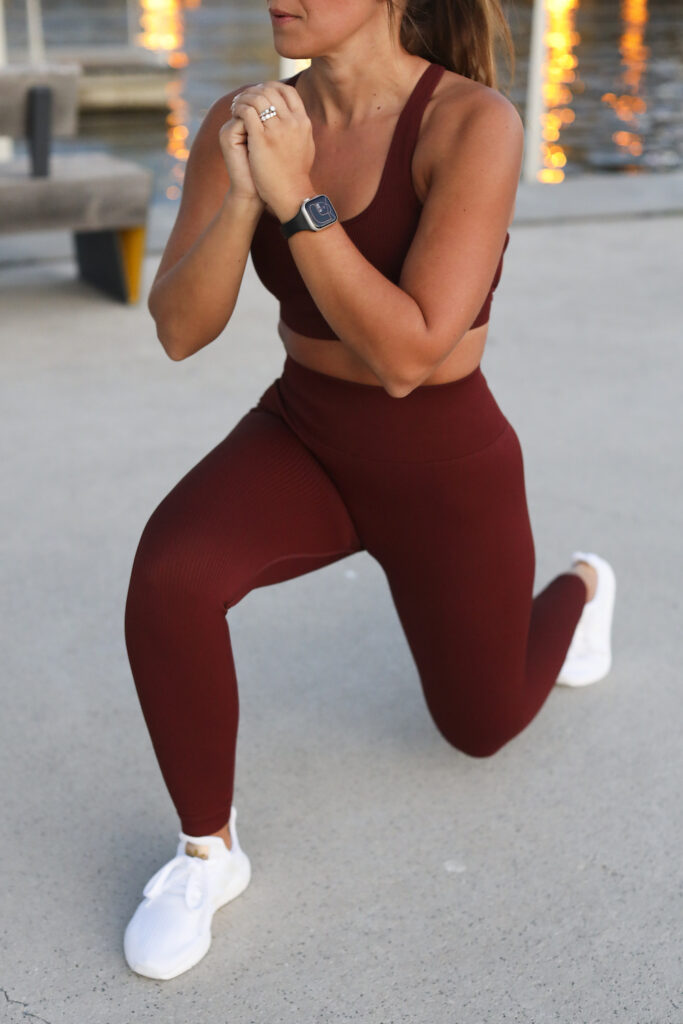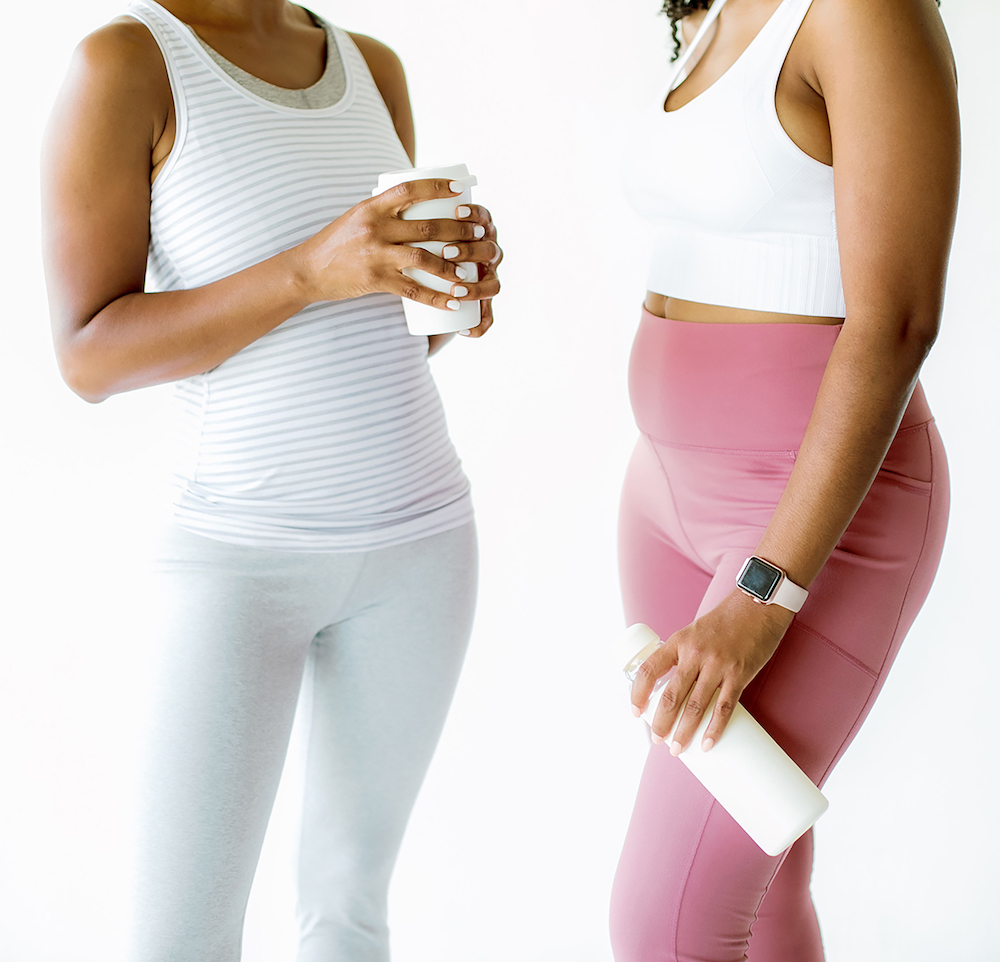
How to build a sustainable exercise routine during perimenopause
We all know that exercise is good for us, but it turns out that staying active during midlife can also help provide relief for common symptoms of peri/menopause. As your body undergoes hormonal changes, such as a drop in estrogen and progesterone levels, it can lead to weight gain, mood swings, night sweats, and hot flashes. These symptoms can impact your energy levels and motivation for physical activity, so it’s essential that you understand how exercise can help you manage these effects and find relief.
How does exercise help menopause symptoms?
Regular exercise is crucial during this transitional phase. It helps with:
- Managing symptoms
- Improving mood
- Supporting weight management
- Strengthening bones
Other benefits of developing a sustainable exercise routine during menopause include:
- Enhancing your quality of life
- Reducing the risk of chronic diseases
- Helping you stay active and healthy during the transition
Setting realistic fitness goals during peri/menopause
Setting realistic fitness goals is essential during menopause for two main reasons: to keep you motivated and to prevent burnout. By setting achievable and safe goals that suit your needs and fitness levels, you are taking control of your fitness journey and ensuring your long-term success.
Start with a short-term goal like joining a community dance class or walking 20 minutes daily, three to five times a week. Mastering these short-term goals helps you to set the foundation for a sustainable exercise routine.
A long-term fitness goal could be participating in a competitive or fun 5K (3.1-mile) walk or running within six months. Setting and achieving these long-term goals provides a clear target and a sense of accomplishment, boosting your motivation and pride in progress.
Just remember to listen to your body’s unique needs and practice consistency when setting realistic goals.

Choosing the right types of exercise for menopause
Choosing suitable exercise during menopause is essential for overall health and well-being. The three main types to include are cardio, strength, and flexibility exercises.
Cardio exercises improve heart health, aid in weight management, and boost your mood. Great options include swimming, cycling, and dancing. These activities are fun and accessible and can be easily integrated into your daily routine.
Strength training is vitally important in midlife as it helps you to maintain muscle mass and improve bone density. Incorporate strength exercises like resistance band training, weight lifting, and bodyweight exercises like push-ups and squats. These activities help counteract muscle loss and bone thinning during menopause.
Flexibility exercises help enhance your range of movement and reduce the risk of injury. Practicing yoga, Pilates, and regular stretching routines can keep you limber and help alleviate stiffness. These exercises also promote stress relief and can reduce menopausal and depressive symptoms.
Incorporating a mix of cardiovascular exercise, strength training, and flexibility exercises into your routine ensures a balanced approach to fitness during this life stage, supporting your overall health and well-being.
Creating a balanced exercise routine for menopause
Creating a balanced exercise routine for this transitional stage of your life involves incorporating a mix of exercises to target different aspects of fitness and parts of your body. Here’s a sample weekly routine that includes a mix of cardio, strength, and flexibility exercises:
Monday: 30 minutes of walking (cardio)
Tuesday: 20 minutes of weight lifting (strength training)
Wednesday: Yoga class (flexibility)
Thursday: 30 minutes of cycling (cardio)
Friday: Resistance band exercises (strength training)
Saturday: Pilates session (flexibility)
Sunday: Rest or gentle stretching
Balance exercise with rest and recovery by listening to your body, allowing muscle groups to rest between workouts, and getting adequate sleep. This approach helps you stay active while preventing burnout and injury.
Addressing common fitness challenges during menopause
Addressing common challenges during menopause is essential for maintaining a sustainable and effective exercise routine. Here are some common challenges and strategies to circumnavigate them:
Dealing with fatigue and low energy: Combat fatigue by staying motivated with varied workouts, adjusting the intensity and duration as needed, and ensuring you get enough rest.
Managing menopause symptoms through exercise: Engage in specific exercises, such as yoga for sleep disturbances and joint pain, swimming to manage hot flashes, and aerobic activities to improve mood.
Staying consistent: Maintain a regular exercise schedule by setting reminders, using a fitness app, joining fitness classes, and finding workout buddies for support and accountability. This will help you stay on track and motivated.

Practical tips for staying active
Research shows that 73% of women don’t treat their menopausal symptoms, but when it’s so easy to do so using exercise, there’s no reason not to. However, we know that maintaining your momentum isn’t always easy, and some days, your get-up-and-go feels like it has gotten up and left!
If you need a helping hand in this department, use these practical strategies to stay active:
- Start slowly and gradually increase your training intensity to avoid injury and build endurance.
- Listen to your body and avoid overexertion. This means you should rest when needed.
- Incorporate physical activity into your daily activities or routines by taking the stairs, gardening, or walking during breaks. Such activities keep you moving without needing a formal workout.
- Stay hydrated and enjoy a nutritious and balanced diet to enhance your energy levels and overall health. Proper nutrition and hydration enhance your exercise performance and help manage menopause symptoms effectively.
- Find an exercise buddy or enlist the help of a personal trainer to keep you motivated and on track.
Building a sustainable exercise routine during menopause plays a significant role in helping you manage the symptoms of this transitional stage, maintain health, and improve your overall well-being. If you get and stay active, you’ll enjoy a profound positive impact on your overall quality of life. Start small, be kind to yourself, and take it one step at a time!



